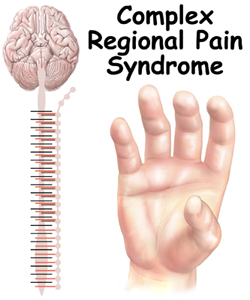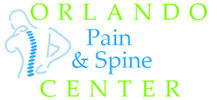 Complex Regional Pain Syndrome (CRPS), also known as Reflex Sympathetic Dystrophy (RSD) Syndrome, is a chronic, long-term and painful condition that affects the joints, bones, and muscles.
Complex Regional Pain Syndrome (CRPS), also known as Reflex Sympathetic Dystrophy (RSD) Syndrome, is a chronic, long-term and painful condition that affects the joints, bones, and muscles.
Potential Causes
The specific cause of CRPS is not known, but some potential causes of it range from a minor injury to severe injuries, such as nerve damage. CRPS normally occurs after an injury and tends to worsen over time. Long periods of being immobile due to injury can also result in CRPS.
How & Why Does CRPS Develop?
CRPS symptoms may result from an injury to the nerves, bones, joints, or tissue, with the original injury ranging from severe, such as a broken bone, to minor, such as a sprain. CRPS develops when the spinal cord sends confusing signals to the brain and the injured area, ultimately interfering with normal blood flow and sensory signals. The result is extreme discomfort, and in some cases an immune response is triggered, which causes common symptoms such as swelling, sweating, and/or muscle spasms.
Symptoms
The symptoms of CRPS frequently include severe burning pain and extreme sensitivity to touch in the area of the injury. Swelling, excessive sweating, and changes in the bone and skin tissue may also occur. If you’re experiencing these symptoms, it’s important to seek early intervention.often affects the legs, arms, feet, and/or hands and symptoms can spread from the initial injury site. Swelling, sweating can also occur Early treatment of CRPS can make a big difference.
Common symptoms include:
• Swelling
• Sweating
• Muscle spasms
• Loss of motion
• Joint stiffness
• Extreme sensitivity to even mild stimuli, such as clothing or a light touch
• Warm, red-looking skin at the injured area initially, changing to cool, bluish-looking skin later
Diagnosis
Accurate diagnosis of the source of pain is imperative to successfully treating CRPS. Orlando Pain & Spine Center can provide you with a diagnosis, which begins with:
• Thorough clinical evaluation
• Complete medical history, analysis of your symptoms, and physical examination
• Additional testing, such as MRIs, X-rays, CT scans, or EMG
We will work with you to determine the right treatment option to help effectively provide pain relief. Some treatments may include alternative treatment methods such as physical therapy, sympathetic nerve block, and spinal cord stimulation.
